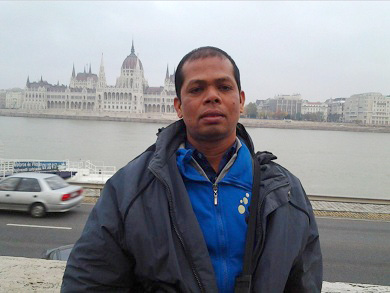Determinant Analysis of Gender Inequality in Human Development in Indonesia
Abstract
The purpose of this research is to examine the impact of poverty, unemployment, economic growth, elderly population, and the average time female education period on gender inequality in human development in Indonesia. The dependent variable is gender inequality. The independent variables are poverty, unemployment, economic growth, elderly population, and female education period. This research was conducted in 34 provinces in Indonesia with an observation period of 2019. The type of data used is secondary data. Data collection was done through online access on Badan Pusat Statistik website. Data analysis method used was multiple regression analysis. The result shown that the number of elderly population and economic growth partially give positive and significant impact on gender inequality in human development in Indonesia. Poverty, unemployment, and the female education period partially give negative and insignificant impact on gender inequality in human development in Indonesia.
Keywords
Full Text:
PDFReferences
Bappenas, (2012). Indeks Kesetaraan dan Keadilan Gender (IKKG) & Indikator Kelembagaan Pengarusutamaan Gender (IKPUG): Kajian Awal, Jakarta: Kementerian Perencanaan Pembangunan Nasional/ Badan Perencanaan Pembangunan Nasional (BAPPENAS).
bps.go.id, 2020. Indeks Pembangunan Gender (IPG) menurut Provinsi, 2010-2019 [Online] Available At: https://www.bps.go.id/dynamictable/2018/08/15/1569/-ipg-indeks-pembangunan-gender-ipg-2010-2017.html [Diakses 11 April 2020].
bps.go.id, 2020. Indeks Pembangunan Manusia (IPM) menurut Provinsi dan Jenis Kelamin, 2010-2019 [Online] Available At: https://www.bps.go.id/dynamictable/2018/08/15/1568/-ipg-indeks-pembangunan-manusia-ipm-menurut-provinsi-dan-jenis-kelamin-2010-2019.html [Diakses 11 April 2020].
bps.go.id, 2020. Statistik Indonesia 2019 [Online] Available At: https://www.bps.go.id/subject/40/gender.html [Diakses 11 April 2020].
Chalid, N. dan Y. Yusuf. (2014). Pengaruh Tingkat Kemiskinan, Tingkat Pengangguran, Upah Minimum Kabupaten/Kota dan Laju Pertumbuhan Ekonomi Terhadap Indeks Pembangunan Manusia di Provinsi Riau. Jurnal Ekonomi. Vol. 22 No. 2 pp. 1-12.
Chambers, Robert. 1999. Pembangunan Desa: Mulai dari Belakang. Jakarta (Terjemahan). LP3ES.
Dormekpor, E. (2015). Poverty and Gender Inequality in Developing Countries. Developing Countries Studies. Vol. 5 No. 10 pp. 76-102.
Hakim, M.A.A., Suryantoto, A., and Rahardjo, M. (2021). Analysis of the Influence of Tourism Growth on Economic Growth and Human Development Index in West Java Province 2012-2018. Budapest International Research and Critics Institute-Journal (BIRCI-Journal) Vol 4 (1): 160-169.
Herdiansyah, D. dan P. S. Kurniati, (2020). Pembangunan Sektor Pendidikan Sebagai Penunjang Indeks Pembangunan Manusia di Kota Bandung, Jurnal Aksi Reformasi Government Dalam Demokrasi, Volume 8, Nomor 1.
Huda, K. (2020). Peran Perempuan Samin Dalam Budaya Patriarki Di Masyarakat Lokal Bojonegoro. Sejarah dan Budaya: Jurnal Sejarah, Budaya, dan Pengajarannya, 14(1), 76.
Innayah, M. N. dan B. C. Pratama, (2019). Tantangan Dan Kesempatan Wanita Dalam Lingkungan Kerja. DERIVATIF: Jurnal Manajemen, Vol. 13, No. 2.
Ioan, D. (2014). Employment - cause and effect of the economic growth. 1st International Conference 'Economic Scientific Research - Theoretical, Empirical and Practical Approaches', ESPERA 2013. Procedia Economics and Finance, 8, 268 – 274.
Ionescu, T. (2012). Exploring the nature of cognitive flexibility. New Ideas in Psychology, 30(2), 190–200.
Kemendikbud, (2018). Sistem Zonasi: Strategi Pemerataan Pendidikan yang Bermutu dan Berkeadilan. Jakarta: Pusat Data dan Statistik Pendidikan dan Kebudayaan.
kemenpppa.go.id, 2020. Profil Perempuan Indonesia 2019 [Online] Available At: https://www.kemenpppa.go.id/lib/uploads/list/b4bdc-profil-perempuan-indonesial-_2019.pdf [Diakses 11 April 2020].
Laubunjong. (2008). The Pattern of Caregiving to the Elderly by Their Families in Rural Communities of Suratthani Province. ABAC Journal, 28(2), 64–74.
Lubis, N.P.S., Nugrahadi, E.W., and Yusuf, M. (2020). Analysis of Superior Commodities in Agricultural Sector in Some Districts of North Sumatera Province. Budapest International Research and Critics Institute-Journal (BIRCI-Journal) Vol 3 (2): 1054-1066.
Mahulauw, A. K., D. B. Santosa dan P. Mahardika (2016). Pengaruh Pengeluaran Kesehatan dan Pendidikan Serta Infrastruktur Terhadap Indeks Pembangunan Manusia di Provinsi Maluku. Jurnal Ekonomi Pembangunan. Vol.14, No.02 pp. 122-148.
Masser B, Abrams D. Reinforcing the glass ceiling: The consequences of hostile sexism for female managerial candidates. Sex Roles. 2004; 51(9–10): 609–615
Natasha, Harum. (2013). Ketidaksetaraan Gender Bidang Pendidikan: Faktor Penyebab, Dampak, dan Solusi. Marwah. Vol. XII No. 1. Pp. 53-64.
Novianti, E. (2019). Kesenjangan Gender Tingkat Pengangguran Terbuka di Indonesia. Jurnal Pendidikan dan Ekonomi, Vol. 8, N0. 2, pp. 166-174.
Oxfam. (2019). The Power of Education to Fight Inequality. OXFAM BREAFING PAPER.
Rizaludin, M. Basri dan S. Arif. 2019. Remaja Putus Sekolah dalam Perspektif Gender di Desa Baktirasa Kecamatan Sragi Kabupaten Lampung Selatan, Jurnal Pendidikan dan Penelitian Sejarah (PESAGI). Vol. 7, No. 5
Ruiz, I. J. dan Nicolas, M. M. (2018). The family caregiver: the naturalized sense of obligation in women to be caregivers. Enfermeria Global. Vol. 17 No. 1 pp. 420-447.
Sukirno, S. (2004). Makro Ekonomi Teori Pengantar. Jakarta: Raja Grafindo Persada.
Sukirno, S. (2011). Makroekonomi Teori Pengantar. Edisi Ketiga. Jakarta: Rajawali Pers.
Sumar, W. T. 2015. Implementasi Kesetaraan Gender Dalam Bidang Pendidikan. MUSAWA. Vol. 7, No. 1, pp. 158-182.
Syofya, H. (2018). Effect of Poverty and Economic Growth on Indonesia Human Development Index. Jurnal Ilmiah Universitas Batanghari Jambi. Vol.18 No.2 pp. 416-423.
Vanek, J., Chen, M. A., Carré, F., Heintz, J., & Hussmanns, R. (2014). Statistics on the Informal Economy: Definitions, Regional Estimates & Challenges. Cambridge: WIEGO.
Verniers, C. dan J. Vala. (2017). Justifying gender discrimination in the workplace: The mediating role of motherhood myths. Plos One, 13(7).
Wollie, G. (2018). The Relationship between Inflation and Economic Growth in Ethiopia. Budapest International Research and Critics Institute-Journal (BIRCI-Journal) Vol I (3): 264-271.
World Bank. (2011). World Development Report 2012 Gender Equality and Development. Washington DC: The World Bank.
Yuhono, P. 2017. Gambaran Peran Keluarga dalam Merawat Lansia dengan Ketergantungan di Desa Pabelan. Publikasi ilmiah, Fakultas Ilmu Kesehatan, Universitas Muhammadiyah Surakarta.
Zusmelia. (2012). Analisis Ketimpangan Gender Dalam Proses Pembangunan. Jurnal Pelangi. Vol. 5 No.1 pp. 1-8.
DOI: https://doi.org/10.33258/birci.v4i4.2708
Article Metrics
Abstract view : 169 timesPDF - 87 times
Refbacks
- There are currently no refbacks.

This work is licensed under a Creative Commons Attribution-ShareAlike 4.0 International License.

This work is licensed under a Creative Commons Attribution-ShareAlike 4.0 International License.

_.gif)

















_.gif)



